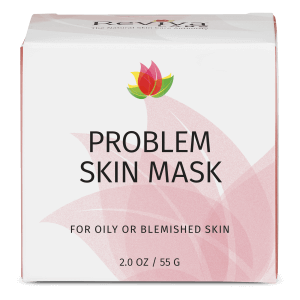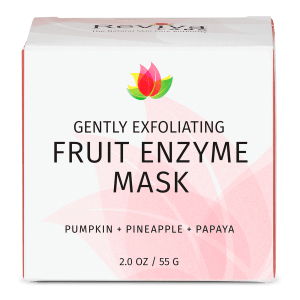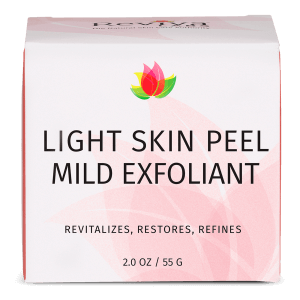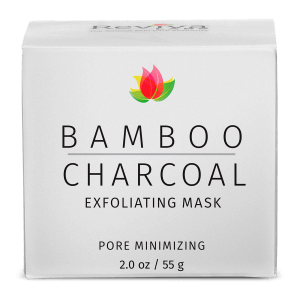Ingredients, Natural, Reviva Labs, Skin Care
How to Exfoliate Sensitive Skin at Home
Exfoliating sensitive skin can be a delicate process, but it is essential for maintaining a healthy, glowing complexion. Sensitive skin tends to react easily to harsh ingredients, making it crucial to choose gentle methods and products. This guide will help you understand how to exfoliate sensitive skin at home safely and effectively.
Understanding Sensitive Skin
Sensitive skin is more prone to redness, irritation, and dryness. These reactions can be triggered by various factors, including environmental stressors, harsh skincare products, and even diet. When exfoliating sensitive skin, it is important to use products specifically designed for this skin type. Always perform a patch test before using any new product to ensure it won’t cause an adverse reaction.
Choosing the Right Exfoliant
Selecting the appropriate exfoliant is the first step in safely exfoliating sensitive skin. Opt for gentle, non-abrasive exfoliants that do not contain harsh particles. Physical exfoliants, like scrubs with large grains, can cause micro-tears and irritation. Instead, look for chemical exfoliants with mild ingredients like lactic acid or fruit enzymes. These ingredients help to dissolve dead skin cells without the need for scrubbing, reducing the risk of irritation.
Natural Exfoliants for Sensitive Skin
Natural exfoliants can be a great alternative for those with sensitive skin. Ingredients such as oatmeal, honey, and yogurt can be used to create gentle exfoliating masks at home. Oatmeal is known for its soothing properties and can help to gently remove dead skin cells. Honey acts as a natural humectant, drawing moisture into the skin while providing mild exfoliation. Yogurt contains lactic acid, which gently exfoliates the skin and improves its texture.
The Importance of Moisturization
After exfoliating, it is crucial to hydrate and soothe the skin. Exfoliation can sometimes strip the skin of its natural oils, leading to dryness and irritation. Applying a moisturizer immediately after exfoliating helps to restore the skin’s barrier and lock in moisture. Look for moisturizers that contain calming ingredients such as aloe vera, chamomile, or ceramides. These ingredients can help to reduce any potential redness and keep the skin hydrated.
Frequency of Exfoliation
Sensitive skin does not require frequent exfoliation. Over-exfoliating can lead to increased sensitivity and damage to the skin barrier. For most people with sensitive skin, exfoliating once or twice a week is sufficient. Always listen to your skin and adjust the frequency if you notice any signs of irritation or discomfort. Consistency is key, so incorporating a gentle exfoliation routine can lead to healthier skin over time.
Patch Testing New Products
Before incorporating any new exfoliant into your routine, it is important to conduct a patch test. Apply a small amount of the product to a discreet area of your skin, such as behind your ear or on your wrist. Wait 24 hours to see if any irritation occurs. If your skin reacts negatively, it is best to avoid using the product on your face. This step can help prevent potential reactions and ensure that the product is safe for your skin type.

Avoiding Harsh Ingredients
When exfoliating sensitive skin, it is important to avoid products that contain harsh chemicals and fragrances. Ingredients such as alcohol, sulfates, and synthetic fragrances can exacerbate sensitivity and cause irritation. Reading ingredient labels carefully can help you choose products that are safe and gentle for your skin. Opt for products labeled as “fragrance-free” and “hypoallergenic” to minimize the risk of irritation.
DIY Exfoliating Masks
Creating your own exfoliating masks at home can be a fun and effective way to care for sensitive skin. For a simple oatmeal and yogurt mask, mix equal parts of finely ground oatmeal and plain yogurt. Apply the mixture to your face and gently massage in circular motions for a few minutes before rinsing with lukewarm water. This mask combines the soothing properties of oatmeal with the gentle exfoliation of yogurt, making it perfect for sensitive skin.
According to a survey conducted by the American Academy of Dermatology, 50% of people with sensitive skin report experiencing irritation when using exfoliating products.
The Role of Hydration
Hydration plays a crucial role in maintaining healthy skin, especially for those with sensitive skin. Drinking plenty of water and using hydrating skincare products can help to keep your skin plump and resilient. Hyaluronic acid is a powerful hydrating ingredient that can attract and retain moisture in the skin. Incorporating a serum or moisturizer containing hyaluronic acid can help to keep your skin hydrated and reduce sensitivity.
Exfoliating During Different Seasons
The needs of your skin can change with the seasons. In colder months, the skin tends to be drier and more sensitive due to lower humidity levels and indoor heating. During this time, it is important to use even gentler exfoliants and focus on hydrating and soothing the skin. In warmer months, the skin may produce more oil, which can lead to clogged pores. Adjusting your exfoliation routine to match the needs of your skin during different seasons can help to maintain its health and balance.
Listening to Your Skin
Ultimately, the best way to care for sensitive skin is to listen to its needs. Pay attention to how your skin reacts to different products and adjust your routine accordingly. If you notice increased redness or irritation, take a break from exfoliating and focus on soothing and hydrating your skin. Everyone’s skin is unique, and finding the right balance takes time and patience.
Consulting a Dermatologist
If you are unsure about which exfoliants to use or how often to exfoliate, consider consulting a dermatologist. A dermatologist can provide personalized recommendations based on your skin type and concerns. They can also help identify any underlying conditions that may be contributing to your skin sensitivity. Professional guidance can be invaluable in developing a skincare routine that is safe and effective for your sensitive skin.
Be Gentle and Mindful Exfoliating Sensitive Skin
Exfoliating sensitive skin at home requires a gentle and mindful approach. By choosing the right products, understanding your skin’s needs, and incorporating soothing and hydrating ingredients, you can achieve a healthy, glowing complexion without irritation. Remember to perform patch tests, avoid harsh ingredients, and adjust your routine based on your skin’s response. With patience and consistency, you can enjoy the benefits of exfoliation while keeping your sensitive skin happy and healthy.










